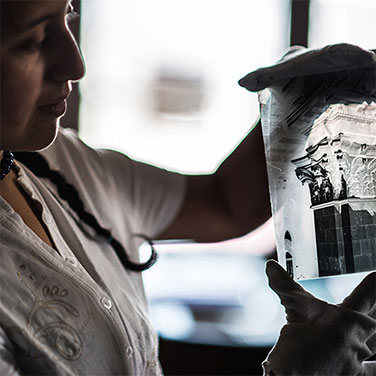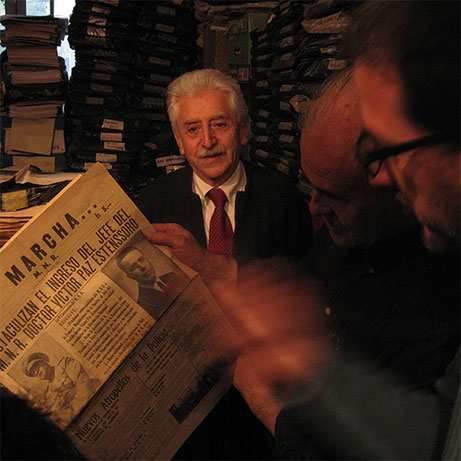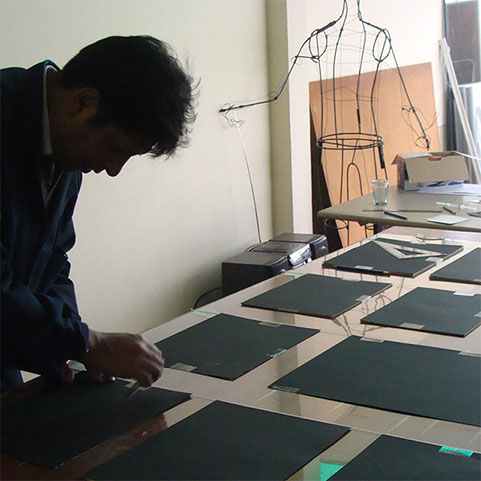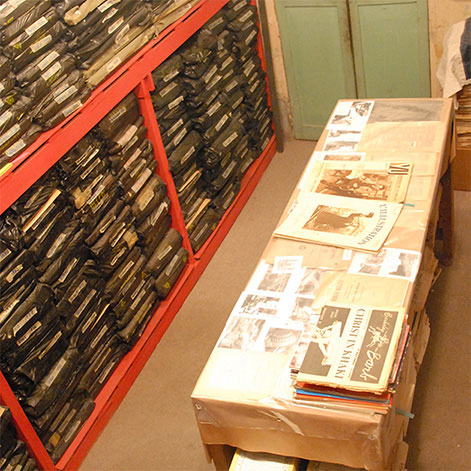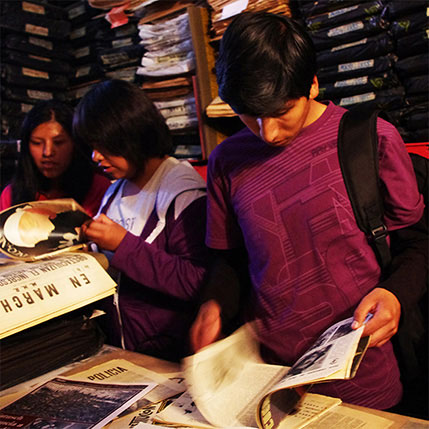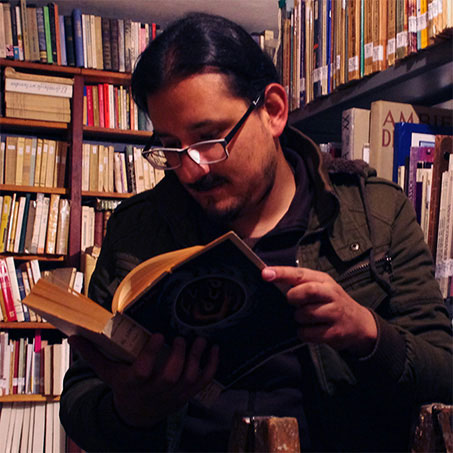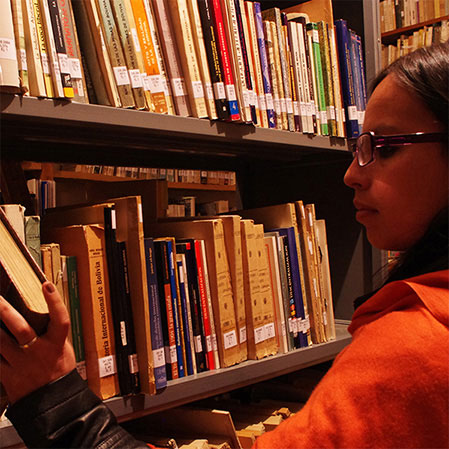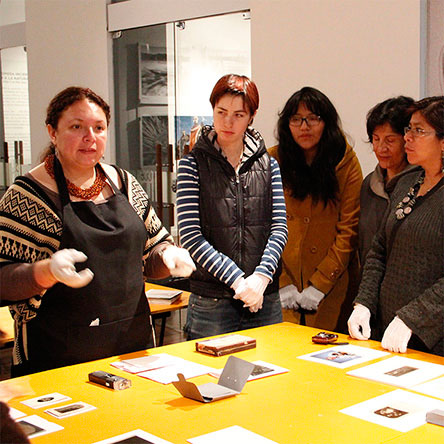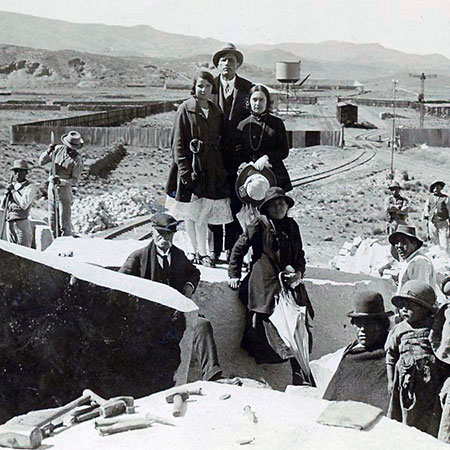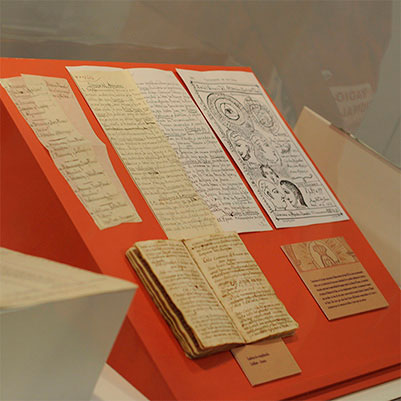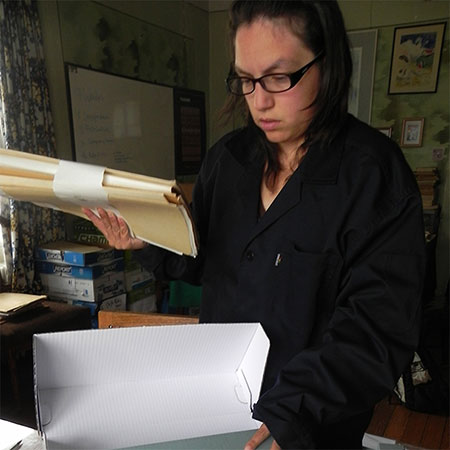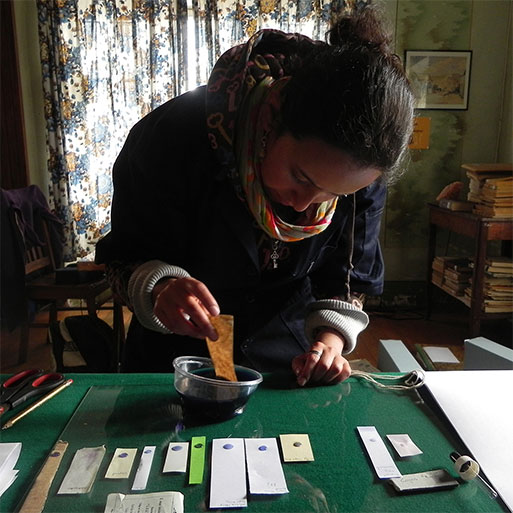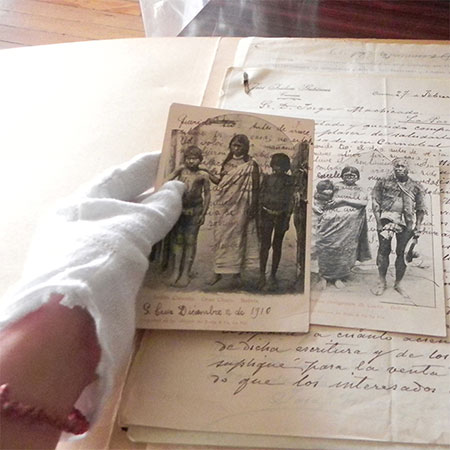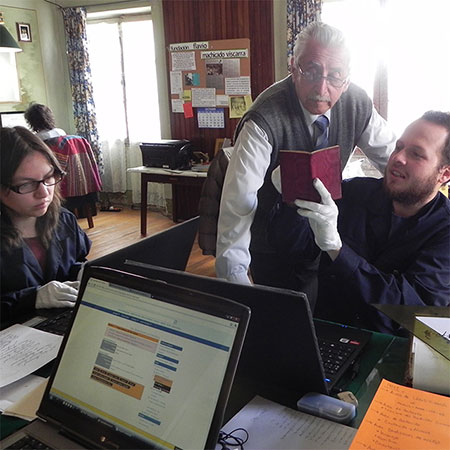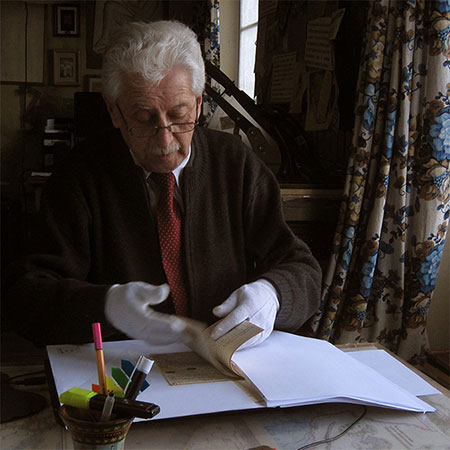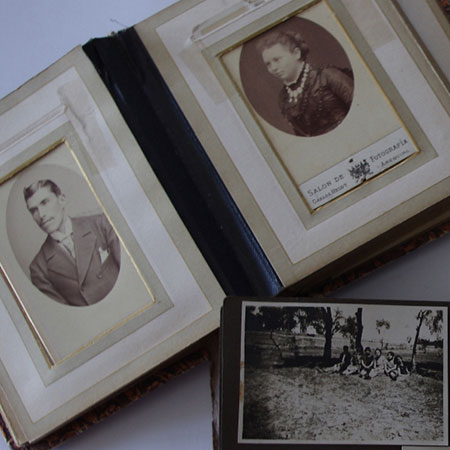Books - Newspapers & Magazines - Archive - Record Collection
Starting in 1996 the FFMV and small groups of volunteers organised and prepared a preliminary inventory of the heritage of the Machicado Viscarra Family.
By 2005, the library was consolidated into different collections (a library, a newspaper and periodical archive, a historical archive, and a music collection). The FFMV started then to provide access to researchers and cultural promoters on a small scale.
Between 2008 and 2009, the library was part of an international exchange programme to support the development of libraries and archives in Bolivia and Peru (BRISAL).
In 2010, funded by a grant by the Spanish Cooperation Agency (AECID - CAP), the FFMV started cataloguing the library using KOHA, an Open-Source Online Public Access Catalogue.
In 2012, funded by a grant from the Programme for Latin American Libraries (PLALA) from Mellon Foundation and the Centre for Latin American Studies at Harvard University, the FFMV consolidated the Historical Archive. The original archive consisted of 12 linear meters of documentation, maps, plans, and over 8000 photographs.
In 2013, the FFMV increased access to the collection considerably by opening the Reading Room and allowing home loans and digitization services to its members. The FFMV financed small research projects on heritage preservation. Projects resulted in a series of exhibitions and publications about cultural life in La Paz, monument history, and European immigrants' role in Bolivia during the first half of the XX century.
Between 2017 and 2020, the FFMV received two infrastructure grants (PIU - FOCUART) to improve access to the Library. More recently, it has received resources from the International Assistance Fund for Cultural and Educational Organisations of the Federal Republic of Germany, the Goethe-Institut, and other partners (www.goethe.de/hilfsfonds). This generous grant will help the FFMV deploy better health and safety protocols in all its activities in response to the COVID19 global emergency.
LIBRARY
The library has a collection of c. 20,000 volumes, while the Archive holds brochures, bolivian and foreign newspapers and magazines starting in 1890.
Only 25% of the collection has been fully catalogued, and it is open to the public. Highlights of the currently available collection include many first editions of Bolivian and foreign books. For example, we hold a copy of Alcides Arguedas "Raza de Bronce" (1919), the complete collection of "Memoirs of Gral O'Leary (1879), the first edition of José Carlos Mariátegui's journal "Amauta" (1926-1930), and an early collection of the New York Times Book Review (1922 - 1956).
Additionally, we hold a small collection of early Aymara dictionaries, along with important rare works of Bolivian literature, including Gamaliel Churata's "Pez de Oro" (1957), Armando Chirveches "La Virgen del Lago" (1920), Virginia Estenssoro's "El Occiso" (1937), and Hilda Mundy's "Pirotecnia" (1936).
Librarians
- Elvia Jove Cusicanqui
- Katherine Pilar Palacios Illanes
- Luis Emilio Figueredo Mendoza
- Javier Carmona Rincón
- Claudia Condori Mamani
Computer Technicians.
- Edgar Amador Pinto
- Esteban Lima Torricos
Volunteers
- Fernando Arteaga
- Javier Gimeno
- Carmen Barahona Arriaza
- Rommy Arce
- Lidia Pausa
- Carlos Valladares
- Tina Peirano
- Eduardo Machicado Saravia
HISTORICAL ARCHIVE
The archive is one among few in Bolivia that meets international standards for document and photography conservation
The historical archive includes correspondence, postcards, photographs, maps, architectural plans, notes and sketches, spanning from 1650 to 1980. It spans the life of three generations of the Machicado, Silva, Saravia, and Viscarra families. It includes important social, economic, and historical details of their relationship with the development of Republican Bolivia, life and economy in the countryside during the Hacienda period, the Pacific War, the Rubber trade, and the early industrial, architectural, and urban development of the city of La Paz.
The archive is one among few in Bolivia that meets international standards for document and photography conservation. Archival descriptions were completed using AtoM, an open-source archival description software based on the International Council of Archives (ICA) standards
Archivists and Historians
- Eliana Navarro Cuellar
- Marcelo Guzman Zilveti
- Cristina Machicado Murillo









